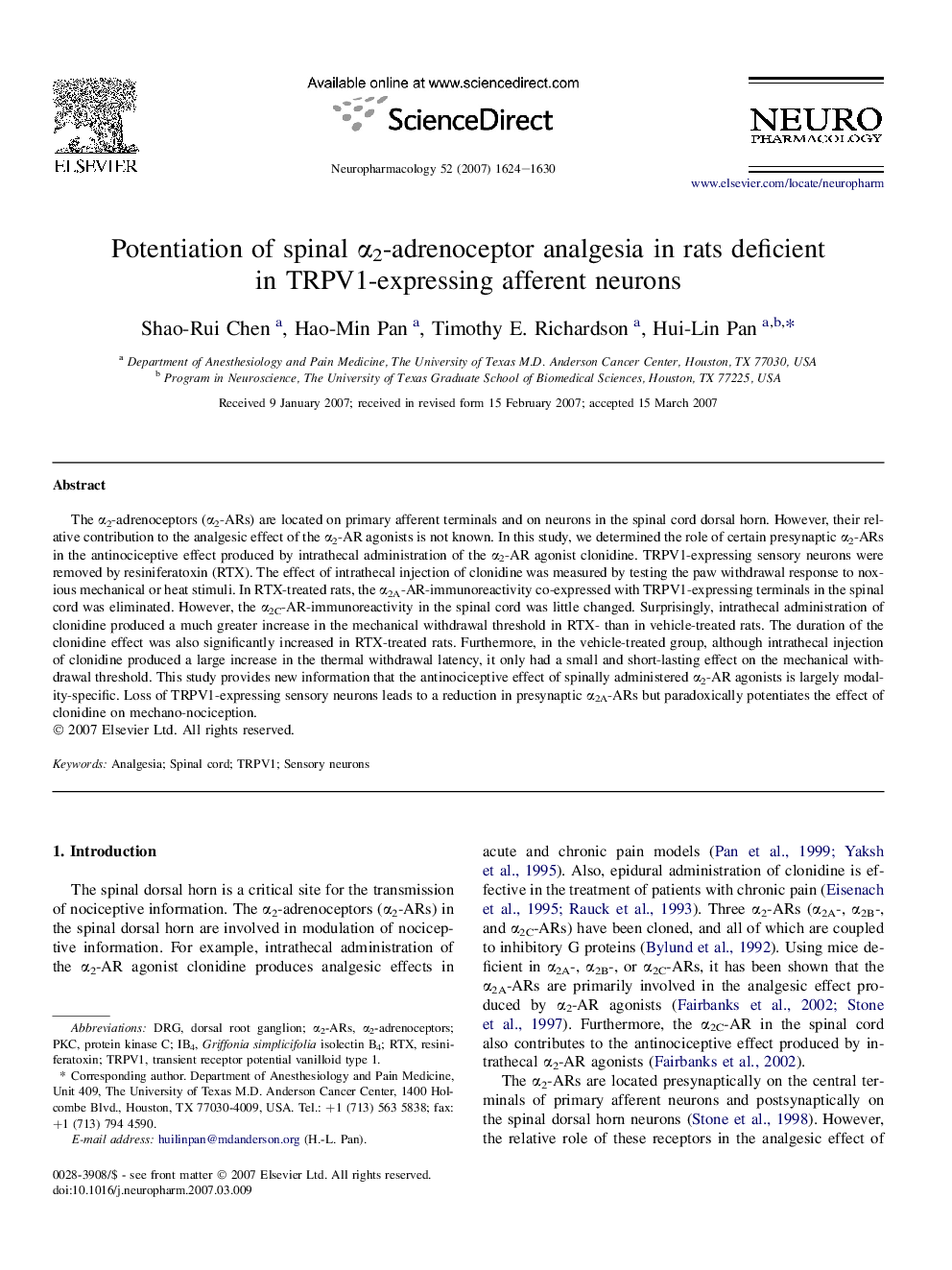| Article ID | Journal | Published Year | Pages | File Type |
|---|---|---|---|---|
| 2494691 | Neuropharmacology | 2007 | 7 Pages |
The α2-adrenoceptors (α2-ARs) are located on primary afferent terminals and on neurons in the spinal cord dorsal horn. However, their relative contribution to the analgesic effect of the α2-AR agonists is not known. In this study, we determined the role of certain presynaptic α2-ARs in the antinociceptive effect produced by intrathecal administration of the α2-AR agonist clonidine. TRPV1-expressing sensory neurons were removed by resiniferatoxin (RTX). The effect of intrathecal injection of clonidine was measured by testing the paw withdrawal response to noxious mechanical or heat stimuli. In RTX-treated rats, the α2A-AR-immunoreactivity co-expressed with TRPV1-expressing terminals in the spinal cord was eliminated. However, the α2C-AR-immunoreactivity in the spinal cord was little changed. Surprisingly, intrathecal administration of clonidine produced a much greater increase in the mechanical withdrawal threshold in RTX- than in vehicle-treated rats. The duration of the clonidine effect was also significantly increased in RTX-treated rats. Furthermore, in the vehicle-treated group, although intrathecal injection of clonidine produced a large increase in the thermal withdrawal latency, it only had a small and short-lasting effect on the mechanical withdrawal threshold. This study provides new information that the antinociceptive effect of spinally administered α2-AR agonists is largely modality-specific. Loss of TRPV1-expressing sensory neurons leads to a reduction in presynaptic α2A-ARs but paradoxically potentiates the effect of clonidine on mechano-nociception.
